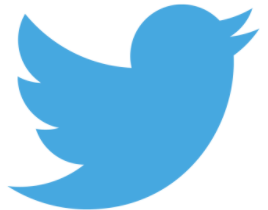During the age of segregation, Washington, D.C.’s Howard Theatre was one of the country’s first large venues to welcome black audiences and performers. It was the most prestigious room in the city’s entertainment and nightlife district of the African American community — its “Black Broadway.” And after decades of dormancy and disrepair, the renovated Howard Theatre reopened in 2012. NPR’s Weekend Edition gave a good sense of the building’s historical importance in a report.
Name a popular African American entertainer between 1910 and 1970, and he or she probably played the Howard: Chuck Berry, James Brown, The Supremes, Ray Charles, Aretha Franklin, Stevie Wonder. Because jazz was once pop music, this means the Howard hosted plenty of jazz legends in the primes of their careers, including everyone from proto-jazz bandleader James Reese Europe to Louis Armstrong to the Count Basie Orchestra to Ella Fitzgerald to Charlie Parker to Jimmy Smith. For further reading, The Washington Post put together this oral history, and created this handy timeline graphic too.
All this makes for a fascinating story, especially as it connects the dots between jazz history and African American history. But now the theater is again becoming a living part of its community. And the particular way the Howard is rebooting gives some clues as to where its legacy stands — how, in the great jazz tradition, its past figures into its present. For example:
- The venue’s bookings continue to be filled with African American entertainers. After the demise of formal segregation which limited black touring performers to the “chitlin’ circuit,” there’s no longer any strict need for the Howard to position itself as a black entertainment mecca. Yet this obviously remains a large goal. A quick glance at the upcoming calendar reveals a wide range of black performers: hip-hop band The Roots, punk-rock legends Bad Brains, comedienne Wanda Sykes, a Sunday Gospel Brunch, “queen of funk” Chaka Khan. There’s room for high-profile jazz in there too: the upcoming month or so sees Esperanza Spalding, McCoy Tyner with tap dancer Savion Glover, and The Bad Plus. (White jazz bands also played the old Howard Theatre as well.) The bookers seem open to having non-black performers with less obvious connections to black-origin popular music; for instance, rockers Blue Oyster Cult and the puppet show Stuffed and Unstrung will feature soon. But at least for now, the heavy emphasis on black culture, both depth and breadth, is a notable choice.
- The appearance of the space alludes to what once was. The original facade and the original stage have been restored. Inside, the architecture and design ring of modernity — 200-inch HD television screens are on either side of the stage, for instance — but with old-school touches of a marble lobby, velvet curtains and plush dining booths. Huge photos of African American musical icons who played the Howard adorn the walls — even in the bathrooms — and a sculpture of Duke Ellington sits outside.. If you look at images of the space — the Post has a gallery and accompanying article about the renovation details, and the Washington City Paper has a few more shots — you can get a sense of how these visual cues will frame the concert experience.
- It’s arriving in a different Washington, D.C. NPR’s report quoted African-American history professor Bernard Demczuk: “But let me be clear: It wasn’t just about black people. The other term for the Howard was the People’s Theatre. And the People’s Theatre means that it really was open for everybody.” That idea is taking on a new resonance. The areas around the venue historically constitute an African American community, being flanked by the U Street entertainment district to the west, Howard University to the north, and residential zones to the south and east. But as a Post article notes, the area is gentrifying, and “African Americans now account for less than half of Shaw and LeDroit Park, the neighborhoods surrounding the Howard, although the areas were nearly 80 percent black a generation ago.” It’s part of a trend in Washington life as a whole; it is estimated that African Americans are no longer a majority population of the District proper. So this theater with a black-centric ethos arrives at a time where D.C.’s “chocolate city” reputation is changing.
Some of the information above comes from or is corroborated by a City Paper cover story called “How Not to Screw up the Howard Theatre.” The article focuses heavily on the idea that “Every inch of the Howard is built to make money”; though it is city-owned, it will be run largely autonomously, “like a business.”
Indeed, the floor accommodates both supper-club-style seated performances and standing shows, maximizing profit for each setup. A new kitchen, a new VIP area and new bars have the potential to drive millions in food and alcohol sales. (Celebrity chef Marcus Samuelsson, the Ethiopian-Swedish proprietor of the Red Rooster in Harlem, designed a soul-food menu.) A “luxury-oriented” PR firm has been brought in for marketing. And a global management company — the Blue Note Entertainment Group, which operates the Blue Note jazz club in New York among other venues worldwide — will ensure high-profile bookings which can put butts in seats.
Once, children were admitted to the Howard for 50 cents. But live performance is now competing with many more forms of entertainment than existed in the Howard’s heyday. If people want some things about the Howard’s ethos to stay the same, others will likely have to change.
9(MDAyOTk4OTc0MDEyNzcxNDIzMTZjM2E3Zg004))




